No direct mentions of Isis in the Bible, yet intriguing connections between Egyptian mythology and biblical texts spark curiosity for further exploration.
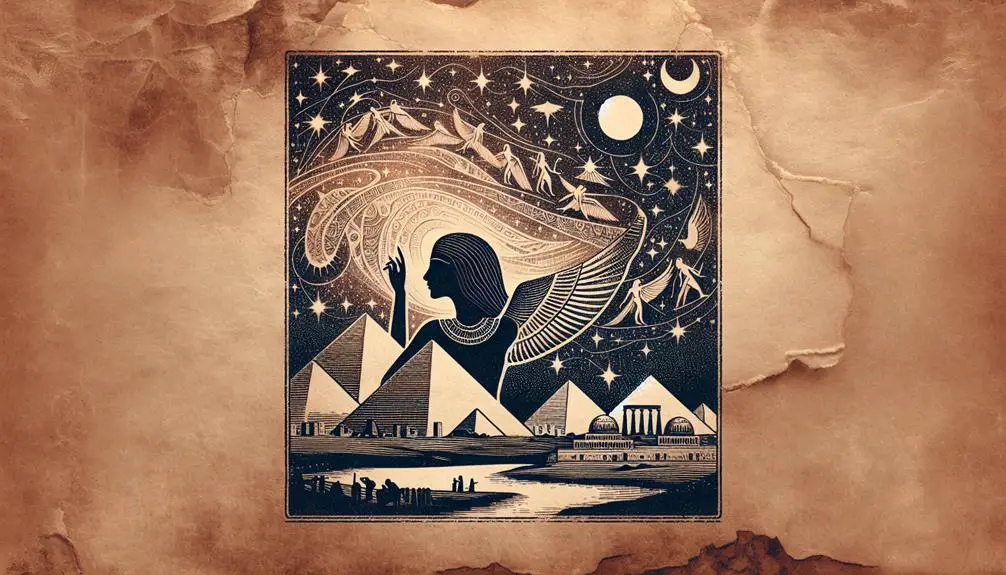
Isis in the Bible
You might be surprised to learn that Isis, the ancient Egyptian goddess, doesn't directly appear in the Bible, despite the profound influence of Egyptian mythology on neighboring cultures.
As you explore the historical context and biblical texts, you'll uncover common misconceptions about the connections between these ancient narratives.
The cultural intersections between the Bible and Egyptian mythology offer a rich tapestry of scholarly interpretations and modern perspectives that challenge our understanding of these ancient texts.
Let's embark on a journey to uncover these hidden threads, inviting you to question what you thought you knew about the biblical world.
Key Takeaways
- Isis is not directly referenced in biblical texts, despite common misconceptions.
- Academic debates exist on the indirect influence of Isis on biblical narratives and themes.
- Similarities in themes of resurrection and divine motherhood link Isis to Christian narratives, yet with distinct origins.
- Scholarly exploration continues into the impact of ancient deities like Isis on the interpretation of biblical stories.
Historical Context of Isis
Isis, an ancient Egyptian deity, holds a significant place in historical religious contexts, embodying the ideals of motherhood, healing, and protection. Her Egyptian origins trace back to the Old Kingdom, making her one of the most ancient and widely venerated gods in the Egyptian pantheon. The relationships within this pantheon are complex, with Isis being the wife of Osiris and mother of Horus, positioning her at the heart of a divine family that significantly influenced Egyptian religious life.
Analyzing her role further, you'll find that Isis's influence extended beyond mere mythology. Her worship practices and the devotion she inspired permeated daily life, reflecting the societal values and the Egyptians' understanding of the divine. The pantheon relationships, particularly her connection with Osiris and Horus, underscore themes of resurrection, rebirth, and the cyclical nature of life, which were central to Egyptian religious beliefs.
Isis's enduring legacy is a testament to her significance. Her cult spread beyond Egypt's borders, influencing neighboring regions and later periods, underscoring her adaptability and the universal appeal of the values she represented. This historical context sets the stage for understanding her potential intersections with biblical texts, highlighting the interconnectedness of ancient religious traditions.
Biblical Texts Overview
Exploring the biblical texts reveals a tapestry of religious thought and practice in the ancient world, inviting comparisons with figures like Isis from neighboring cultures. Through textual analysis, you'll uncover a diversity of literary genres that contribute to our understanding of these ancient texts.
When you dive into the Bible for such analysis, consider the following aspects:
- Historical Narratives: These accounts provide context and background, setting the stage for deeper exploration into the beliefs and practices of the time.
- Poetic and Wisdom Literature: This genre offers insights into the spiritual and philosophical reflections of ancient societies, allowing for comparative analysis with the devotion surrounding Isis.
- Prophetic Writings: These texts often contain social and religious critiques that can be paralleled with the roles deities like Isis played in their respective cultures.
Textual analysis across these genres sheds light on the complex interplay of religion, culture, and society in the ancient Near East. Such an approach not only enriches your understanding of the biblical texts but also provides a framework for comparing these writings with the reverence shown to deities like Isis in adjacent cultures.
Common Misconceptions
You may find yourself questioning if Isis, the Egyptian deity, has any biblical references or connections.
This segment aims to clarify such confusion by objectively analyzing the historical and textual evidence.
It's crucial to approach this topic with a clear distinction between mythological figures and their potential biblical mentions.
Isis: Biblical References?
Contrary to popular belief, the figure of Isis doesn't appear in the canonical texts of the Bible. This confusion often stems from a lack of understanding about the mythological origins of Isis as an Egyptian deity. Here are three critical points to consider:
- Egyptian Deity: Isis originates from ancient Egyptian religion, not from Judeo-Christian texts.
- Mythological Origins: Her story forms a significant part of Egyptian mythology, involving themes of magic, resurrection, and the afterlife.
- No Biblical Reference: Despite thorough examinations, scholars have found no direct references to Isis within the Bible's narratives.
Understanding these distinctions is crucial for accurately discussing religious texts and the historical context of mythological figures like Isis.
Clarifying Isis Confusion
Having established that Isis does not appear in the Bible, it's essential to address common misconceptions surrounding her supposed biblical presence. The confusion often stems from a mix of naming origins and media influence.
Misconception |
Clarification |
|---|---|
Isis is a biblical character |
Isis originates from Egyptian mythology, not biblical texts. |
The name 'Isis' appears in the Bible |
No direct references to Isis exist in biblical scripture. |
Media portrays Isis as biblical |
Media influence conflates historical and mythological narratives. |
Isis's story parallels biblical figures |
While there are thematic similarities, Isis's narrative is distinct. |
Isis's worship influenced biblical texts |
There is no scholarly consensus on significant direct influence. |
Understanding these distinctions helps in approaching the subject with a more informed and analytical perspective.
Cultural Intersections
You'll find that the intersection of Isis in biblical narratives offers a rich tapestry for exploration, particularly through historical contextualization, religious symbolism overlap, and comparative mythological themes.
This analysis reveals how ancient cultures interacted with and influenced each other's spiritual narratives. By examining these intersections, you gain a deeper understanding of the complexities involved in the transmission and adaptation of religious symbols and stories across different civilizations.
Historical Contextualization
Understanding the historical context of Isis in the Bible necessitates exploring the intricate cultural intersections between ancient Egyptian beliefs and early Judeo-Christian traditions. This exploration unveils the rich tapestry of cultural and religious exchange that shaped the ancient world. To grasp the depth of these intersections, consider the following:
- Egyptian Origins: The worship of Isis, stemming from Egyptian mythology, highlights the spread of deity worship across cultures.
- Cultural Exchange: Interactions between Egyptians and neighboring civilizations facilitated the adoption and adaptation of religious practices.
- Syncretism: The blending of Egyptian and Judeo-Christian beliefs illustrates the dynamic nature of religious evolution.
This analytical approach underscores the complexity of tracing Isis's influence within biblical contexts, emphasizing the necessity of understanding these cultural and religious syntheses.
Religious Symbolism Overlap
Building on the historical context of Isis's influence, we now examine the overlapping religious symbolism between ancient Egyptian beliefs and early Judeo-Christian traditions, highlighting significant cultural intersections. Iconography comparisons reveal intriguing parallels, such as the motherhood and fertility symbols associated with Isis that echo in the portrayal of the Virgin Mary.
Both figures are often depicted in a protective stance over their divine child, suggesting a shared motif of divine motherhood across cultures. Additionally, ritual similarities, including baptism-like purification rites in the cult of Isis, find echoes in Christian baptism practices.
These overlaps aren't mere coincidences but reflect a profound intercultural exchange, where religious symbols and practices evolve, blending elements from different traditions to create a rich tapestry of shared human experience.
Comparative Mythological Themes
Several mythological themes shared between the ancient Egyptian cult of Isis and early Judeo-Christian narratives illustrate a profound cultural intersection, revealing how foundational myths can transcend cultural boundaries to express universal human experiences.
You'll find that both traditions highlight:
- Resurrection and rebirth – Egyptian rituals associated with Isis and Osiris closely parallel the Christian narrative of death and resurrection, symbolizing renewal and eternal life.
- Virgin birth – Mythological parallels exist between the conception of Horus by Isis and the Christian story of Jesus' birth to the Virgin Mary, emphasizing themes of miraculous birth and divine intervention.
- Protective motherhood – Both traditions venerate the figure of the protective mother, whether it's Isis shielding Horus or Mary with Jesus, showcasing a universal reverence for maternal fortitude and sacrifice.
Scholarly Interpretations
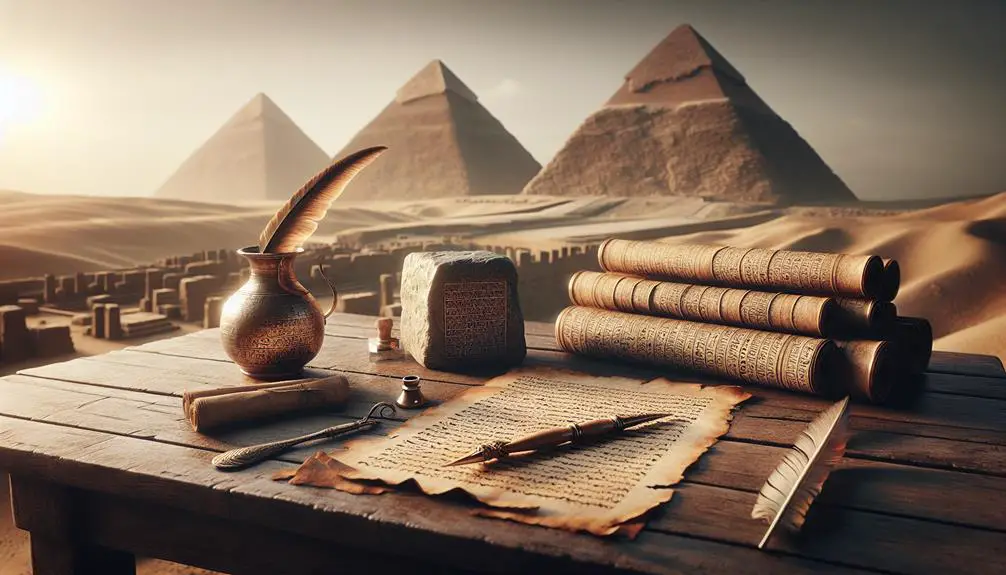
Scholars have debated the presence and interpretation of Isis in biblical texts, highlighting the complexity of ancient religious interconnections. The Egyptian pantheon, with Isis as a central figure, has been a focal point of academic controversies, especially regarding its influence on biblical narratives. You'll find that researchers meticulously analyze linguistic cues, historical context, and cross-cultural exchanges to trace possible references to Isis and her attributes within the Bible.
The crux of scholarly interpretations lies in understanding how ancient cultures interacted and influenced each other's religious practices and beliefs. Some scholars argue that the syncretism observed in the ancient Near East included elements of the worship of Isis, suggesting that these influences might be discernable in certain biblical passages. Others, however, caution against overreaching conclusions, emphasizing the need for concrete evidence before drawing direct links between the Bible and specific deities of the Egyptian pantheon.
This rigorous academic debate ensures a nuanced exploration of the subject, where every claim is scrutinized and every piece of evidence is weighed. It's a testament to the complexity of deciphering ancient texts and understanding the multifaceted relationships between different religious traditions.
Modern Perspectives
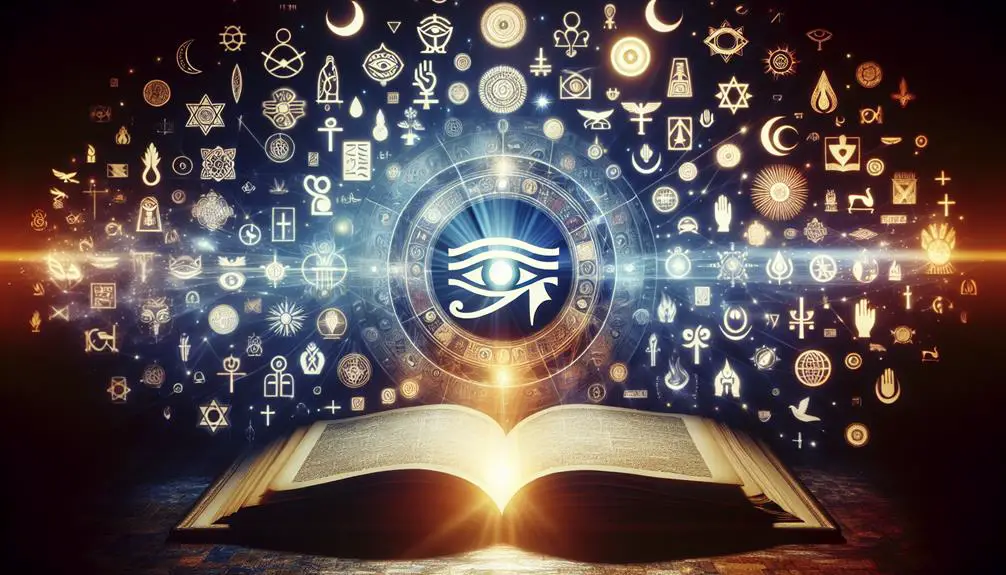
In recent years, modern perspectives have shifted the focus towards understanding the continuing impact of ancient religious figures, like Isis, on contemporary interpretations of biblical texts. This reevaluation has enriched dialogues within academic and public spheres, highlighting the intricate ways in which ancient mythologies intertwine with sacred scriptures.
Here are three key areas where these modern perspectives have made significant contributions:
- Contemporary Debates: Scholars and theologians now engage in lively discussions about the influence of figures like Isis on the conceptualization of divine femininity and motherhood in the Bible. These debates often explore the cross-cultural exchanges that shaped early biblical narratives.
- Mythological Parallels: Researchers meticulously analyze the stories of Isis to uncover mythological parallels with biblical figures and themes. This comparative approach sheds light on shared motifs of resurrection, redemption, and divine intervention, offering fresh insights into familiar biblical stories.
- Interdisciplinary Approaches: Modern scholarship employs interdisciplinary methods, blending history, archaeology, and literary criticism, to explore the presence and significance of Isis in biblical texts. This holistic approach allows for a more nuanced understanding of ancient religious landscapes and their enduring legacy in contemporary religious thought.
These perspectives underscore the complexity of interpreting ancient texts and the dynamic nature of religious traditions, emphasizing the importance of openness and scholarly rigor in contemporary discussions.
Frequently Asked Questions
How Do Modern Religious Movements View the Inclusion or Reference to Isis in the Bible?
You might be curious about how modern religious movements interpret Egyptian mythology's influence, particularly regarding comparative theology.
It's fascinating to note that references or allusions to figures like Isis aren't directly found in canonical texts. However, scholarly discussions often explore these connections to understand broader theological perspectives.
Most contemporary faith communities focus on the symbolic significance, integrating or contrasting these ancient narratives within their own doctrinal frameworks, ensuring a rich tapestry of interfaith dialogue.
Are There Any Hidden or Coded Messages About Isis in Biblical Texts Not Covered by Mainstream Interpretations?
You're exploring whether biblical texts contain hidden or coded messages beyond mainstream interpretations. This journey includes examining symbolic parallels and cultural influences, which mightn't be immediately apparent.
Scholars analyze texts for layers of meaning, considering the historical context and cross-cultural exchanges that could embed additional significance. However, any direct connections to figures or concepts outside the traditional biblical canon, such as Isis, require careful, objective analysis to avoid speculative conclusions.
How Has the Portrayal of Isis in the Bible Influenced Contemporary Art and Literature Outside of Religious Contexts?
You've stumbled upon a stimulating subject: how Isis iconography has seeped into contemporary art and literature. This intriguing infusion has reshaped our cultural canvas, casting a captivating charm beyond religious realms.
Literary adaptations delve deep, drawing directly from ancient allegories, yet they transcend traditional tales. Analyzing this artistic and literary labyrinth reveals a rich reservoir of reinterpretation, where ancient symbols evolve, echoing eternally in our collective consciousness.
What Are the Psychological Impacts on Individuals Who Discover Connections Between Isis and Biblical Narratives?
When you discover connections between historical narratives and modern beliefs, it can lead to cultural shock and identity crises.
Analyzing these intersections, you might experience a profound psychological impact. It challenges your preconceptions, potentially leading to a reevaluation of personal and cultural identity.
This analysis can reveal how deeply historical narratives are woven into the fabric of contemporary life, influencing your understanding of history, culture, and even your own beliefs.
Can the Study of Isis in the Bible Contribute to Interfaith Dialogue and Understanding, and if So, How?
Exploring mythological parallels in religious texts can indeed foster interfaith understanding. By juxtaposing cultural integration with your study, you'll uncover commonalities that bridge divides.
Analyzing these narratives objectively reveals how shared myths, like those involving deities such as Isis, serve as a foundation for dialogue. This scholarly approach not only highlights similarities but also encourages a deeper appreciation of diverse belief systems, promoting a more inclusive and empathetic world view.
Conclusion
In wrapping up, you've journeyed through the historical corridors where Isis, an emblem of ancient divinity, intersects with biblical narratives. This exploration reveals the tapestry of human belief, woven with threads of misconception and enlightenment.
As scholars dissect these intersections, they unveil a broader understanding of cultural and religious syncretism. You stand at the crossroads of past and present, reminded that the quest for knowledge, much like the phoenix rising from the ashes, is eternal and transformative.

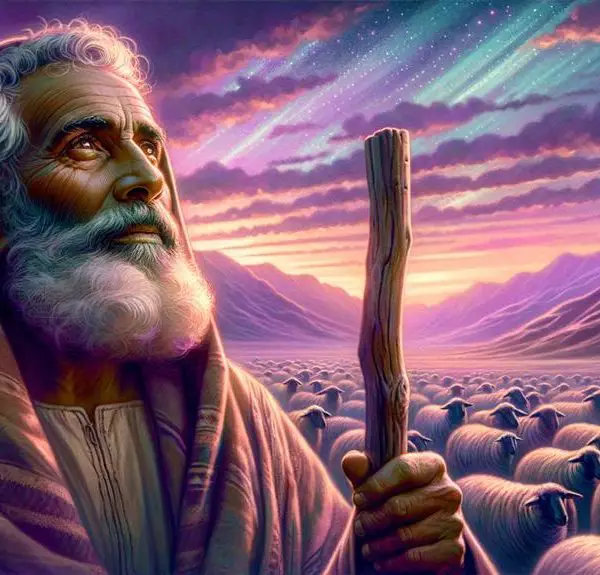
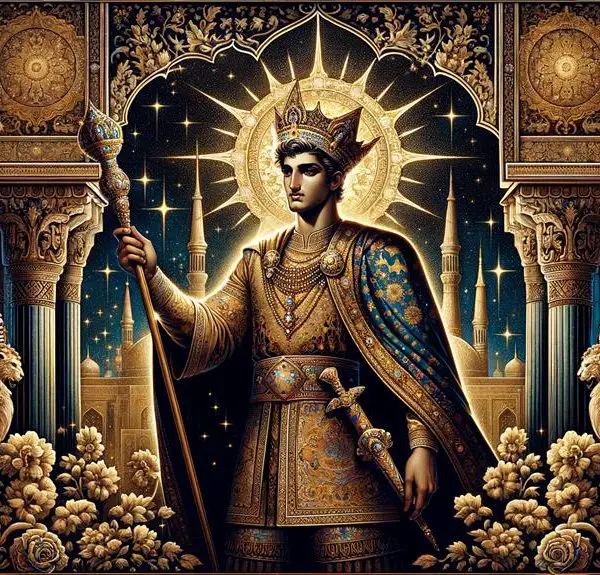
Sign up